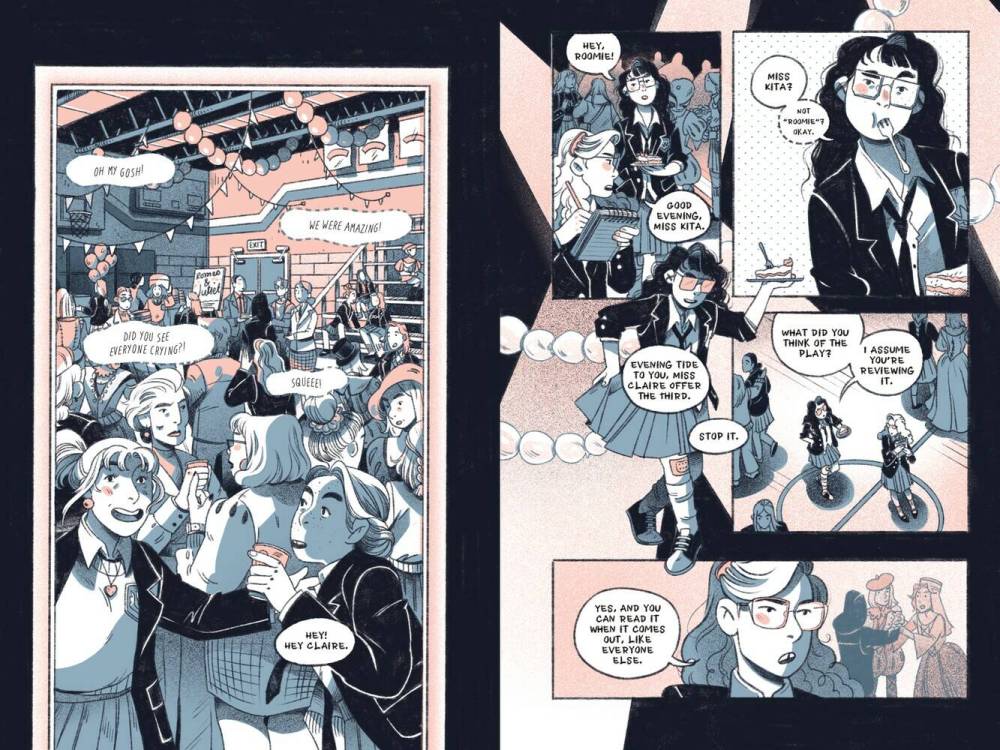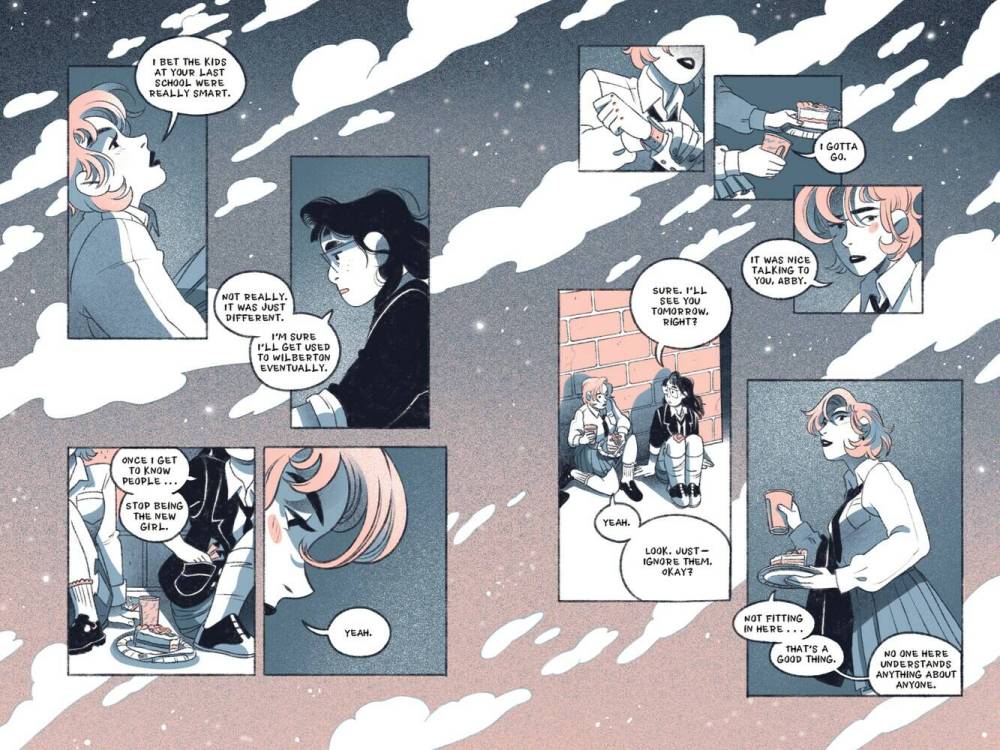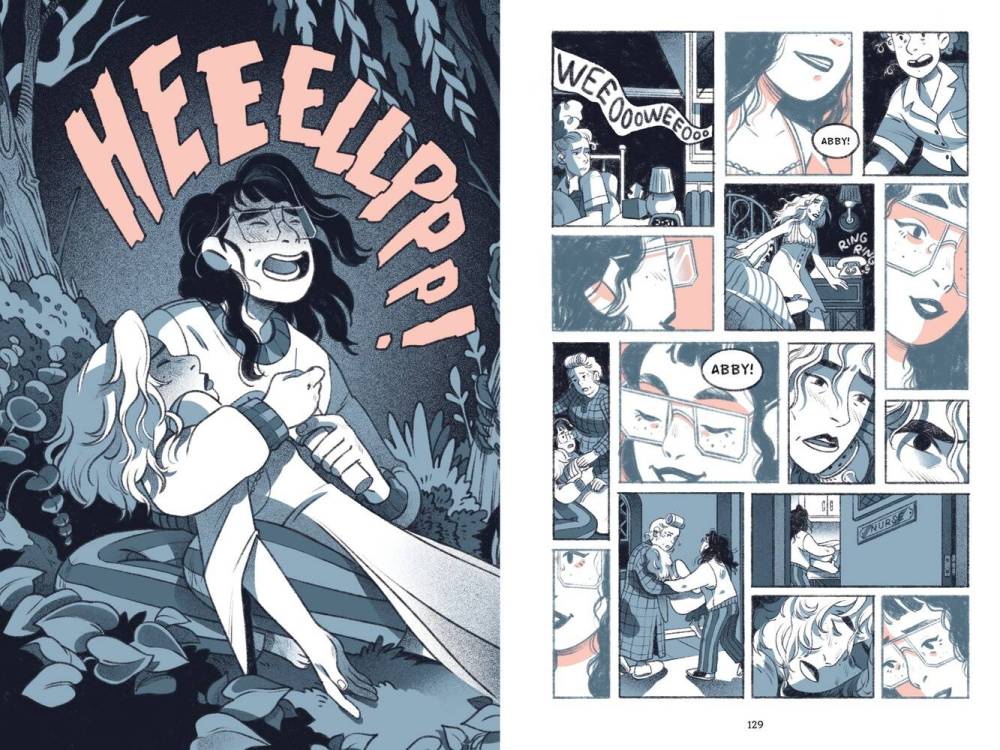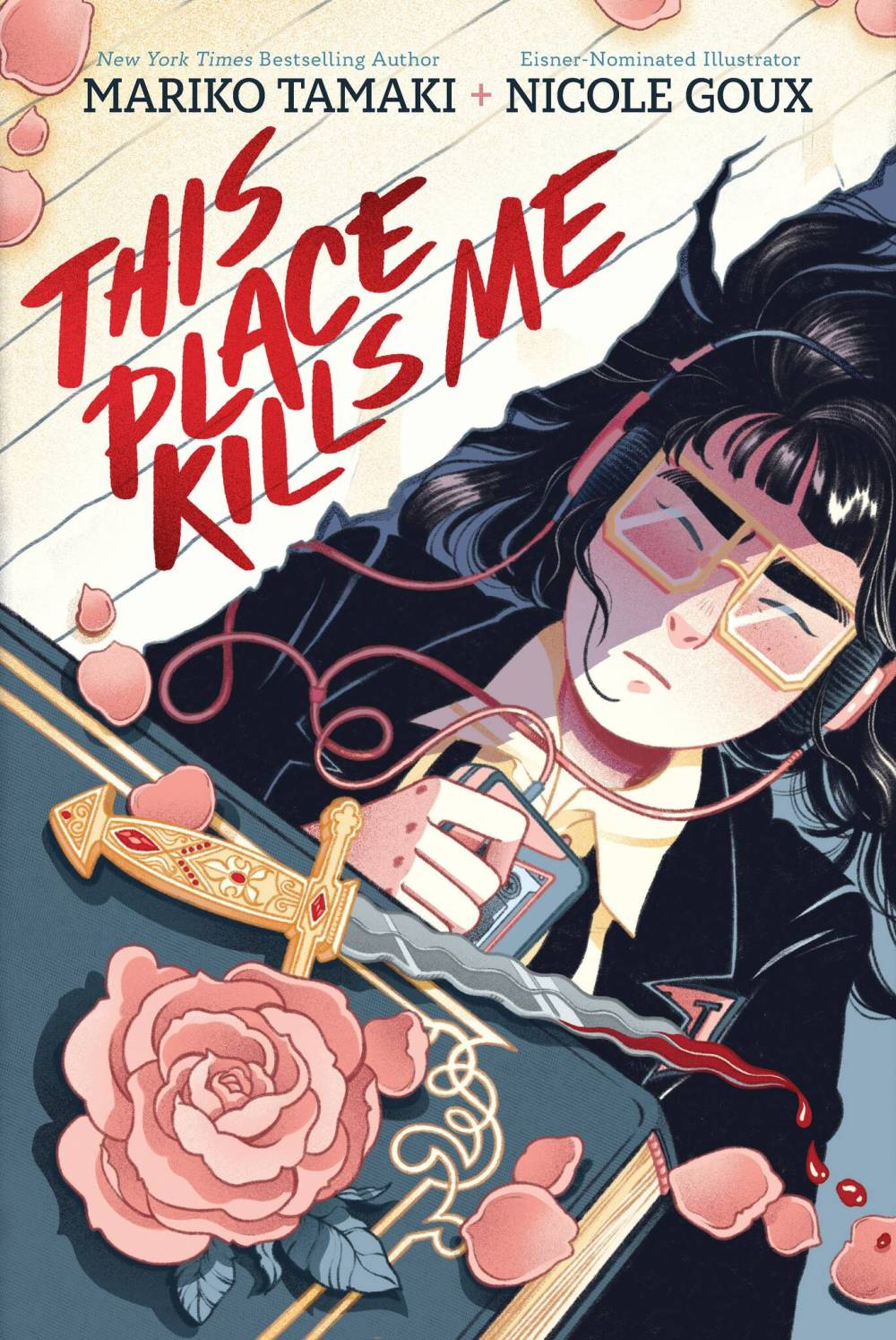Curtain call
Theatre student’s death sets outcast teen to sleuthing in retro graphic novel
Advertisement
Read this article for free:
or
Already have an account? Log in here »
To continue reading, please subscribe:
Monthly Digital Subscription
$1 per week for 24 weeks*
- Enjoy unlimited reading on winnipegfreepress.com
- Read the E-Edition, our digital replica newspaper
- Access News Break, our award-winning app
- Play interactive puzzles
*Billed as $4.00 plus GST every four weeks. After 24 weeks, price increases to the regular rate of $19.00 plus GST every four weeks. Offer available to new and qualified returning subscribers only. Cancel any time.
Monthly Digital Subscription
$4.75/week*
- Enjoy unlimited reading on winnipegfreepress.com
- Read the E-Edition, our digital replica newspaper
- Access News Break, our award-winning app
- Play interactive puzzles
*Billed as $19 plus GST every four weeks. Cancel any time.
To continue reading, please subscribe:
Add Winnipeg Free Press access to your Brandon Sun subscription for only
$1 for the first 4 weeks*
*$1 will be added to your next bill. After your 4 weeks access is complete your rate will increase by $0.00 a X percent off the regular rate.
Read unlimited articles for free today:
or
Already have an account? Log in here »
Secrets and intrigue are folded into old-school notes and high-school playbills in this neo-noir graphic novel by Canadian comics powerhouse Mariko Tamaki and acclaimed illustrator Nicole Goux.
Set in the late 1980s at the fictitious Wilberton Academy, This Place Kills Me centres around the death of budding theatre ingenue Elizabeth Woodward. Though her demise is ruled a suicide by local police, outcast new girl Abby Kita is determined to find out what really happened to her classmate, even though her efforts won’t win her any points with the popular crowd.
As the mystery unfolds, reluctant bonds are forged and broken as Tamaki and Goux deliver a fast-paced, timely whodunit that uncovers the sinister side of an outwardly pristine all-girls prep school.

Supplied photo
Mariko Tamaki
The intricacies of teen-girl social dynamics, especially as viewed through an ostracized peer, have become a signature of Tamaki’s work (see: Skim, This One Summer and Laura Dean Keeps Breaking Up with Me). The cliques at Wilberton are no exception; one gets the feeling that since she transferred there, Abby has been donning headphones not only as a reminder of what she left behind, but also as an antidote to the constant stream of gossip permeating every room in the school.
When Abby realizes some of this information may now be useful, she forms a sort-of friendship with roommate Claire, another observer ignored by the WTS, Wilberton’s exclusive theatrical society of it-girls. As the school’s reporter and de-facto theatre reviewer, Claire becomes the Watson to Abby’s Sherlock, privy to longstanding institutional knowledge (juicy rumours surrounding former WTS members), but is also more naïve than street-smart former public-school kid Abby.
As Abby searches for clues, often with Claire’s help, Goux (whose excellent Forest Hills Bootleg Society also explores teen-girl friendships) leans heavily into the story’s ‘80s era, with a pink and grey palate and a healthy dose of retro computers, cassettes and letters written on scraps of notebook paper. Cursive handwriting also plays a significant role. Pages filled with these tangible elements lend an immersive feel that invites the reader to piece together evidence alongside the book’s characters. Those familiar with noir and hard-boiled mysteries will also appreciate Tamaki’s clever positioning of Abby as the kind of sleuth often found in such genres, as Goux’s cinematic use of stark shadows and grey tones ramp up the tension and atmosphere.
While Abby lurks undetected (and isolated) in hallways, around corners and behind half-closed doors, she is, of course, also hiding secrets of her own; since being at Wilberton, she has been privy to insidious homophobic bullying surrounding the illicit context of her arrival there. She overhears both other students and faculty members calling her “sick” and “an external, damaging influence.”
This damning language best describes the villain at large, and due to Tamaki’s masterful display of the social hierarchies at hand, the irony and pathos of the story’s reveal are palpable. So too is the author’s compassionate treatment of Wilberton’s flawed-but-vulnerable teen girl cohort, likely as a nod to how young women’s murders (and true crime in general) are often sensationalized at the victim’s expense.

Supplied photo
Nicole Goux
Nonetheless, the stakes have been high for Abby too, as This Place Kills Me is really a story about an outsider whose tenacity could potentially dismantle a delicate ecosystem of harm — but at what cost to herself?
This too is well-hewn noir territory, but in place of its usual fatalism, Tamaki and Goux instead offer the hope that Abby is perhaps done hiding in the shadows.
Nyala Ali writes about race and gender in contemporary narratives.






